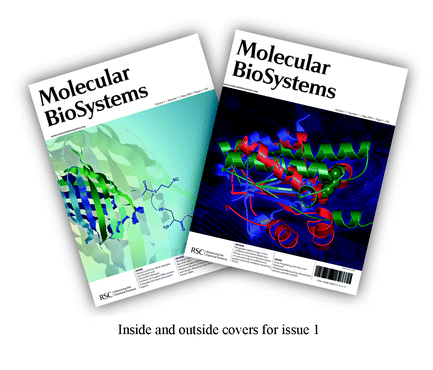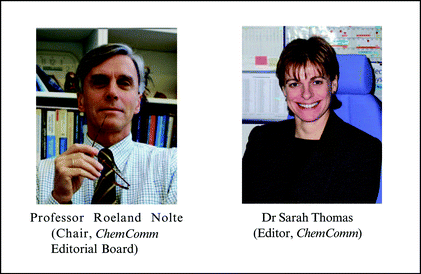New journal Molecular BioSystems has arrived
Abstract
Following on from our recent Editorial in Issue 16 we are delighted to announce that the first issue of Molecular BioSystems is now published.
Molecular BioSystems is a chemical biology journal with a particular focus on the interface between chemistry and the -omic sciences and systems biology. The journal comes free with your ChemComm subscription and we are pleased to bring you this added benefit to complement the chemical biology content you already receive in ChemComm.
For those of you reading the print issue of ChemComm you will find Molecular BioSystems at the back of this issue. If you are reading ChemComm online you will find links to Molecular BioSystems (http://www.molecularbiosystems.org) from the contents page of this issue and from our homepage (http://www.rsc.org/chemcomm). The entire contents of Molecular BioSystems Issue 1 is free online so please do take a look.

Molecular BioSystems publishes three review-style articles (Reviews, Highlights, Opinions) and three primary research articles (Methods, Communications, Papers) as well as a “Hot off the Press” feature in which recent work published elsewhere is highlighted.
Articles in the first issue of Molecular BioSystems include a Review from Herbert Waldmann on the application of protein structure similarity clustering (PSSC) in developing focused libraries of protein ligands (page 36), a communication on affinity purification of RNA polymerase (page 53), a method for profiling bacterial lipopolysaccharides using electrophoretic and mass spectrometric strategies (page 46), and Kazunari Taira reviews functional gene-discovery systems based on libraries of hammerhead and hairpin ribozymes and short hairpin RNAs (page 27).
As you know, ChemComm publishes a significant quantity of chemical biology and this issue is no exception. The Feature Article highlights recent progress in making synthetic nucleases (page 2540), and chemical biology communications include reports on nucleoside analogues suitable for recognising the CG inversion (page 2555), and a strategy for blocking the active site accessibility of MMP-9 by “multi-prong” surface binding groups (page 2549). To publish your chemical biology in ChemComm, authors in the Americas should submit their manuscripts to Associate Editor Barbara Imperiali, and manuscripts from all other regions should be sent to the Editorial Office in Cambridge, UK.
We hope you will enjoy reading the chemical biology in ChemComm and Molecular BioSystems and we welcome your comments.
With very best wishes,
Professor Roeland Nolte, Editorial Board Chair
Dr Sarah Thomas, Editor

| This journal is © The Royal Society of Chemistry 2005 |
